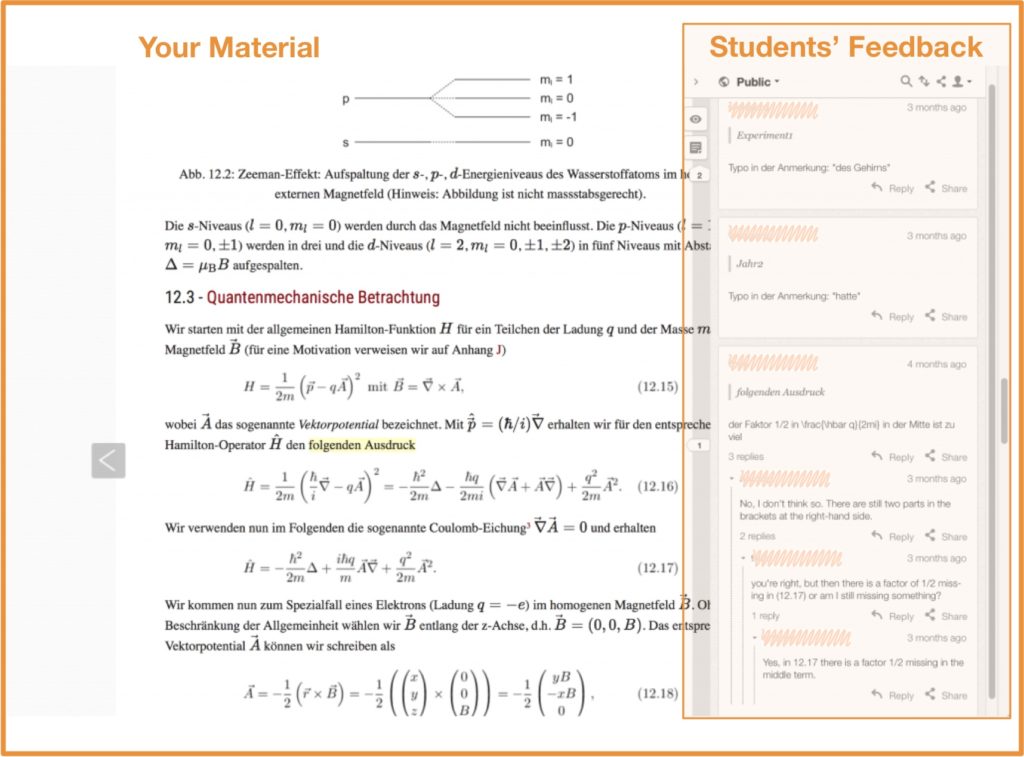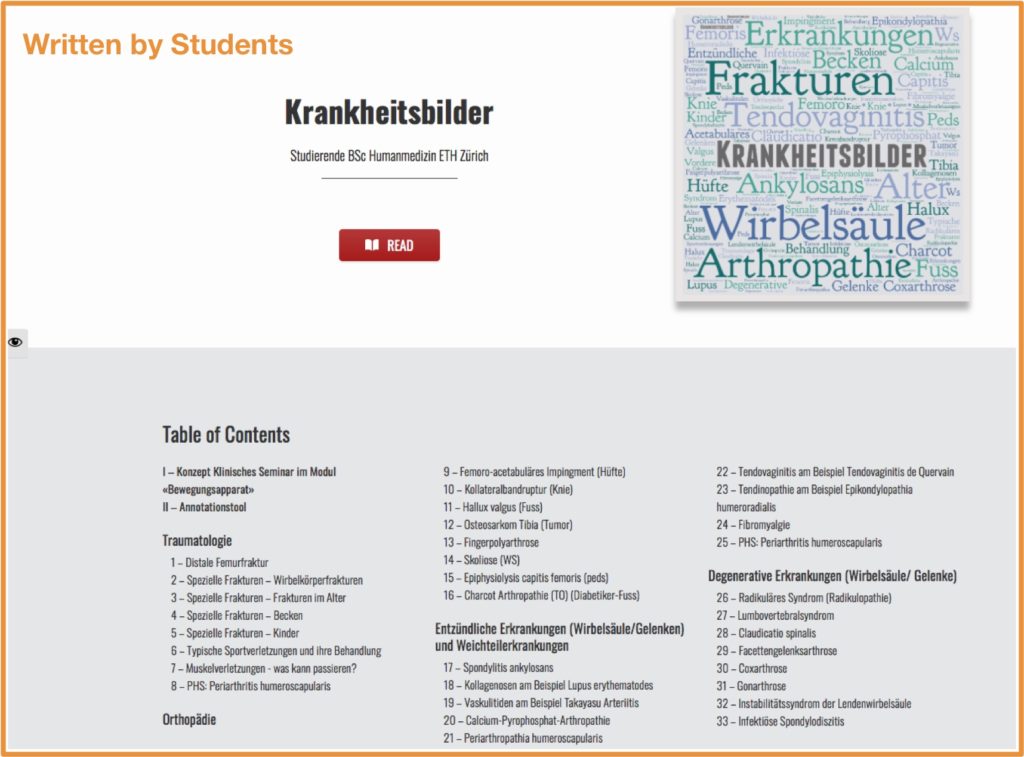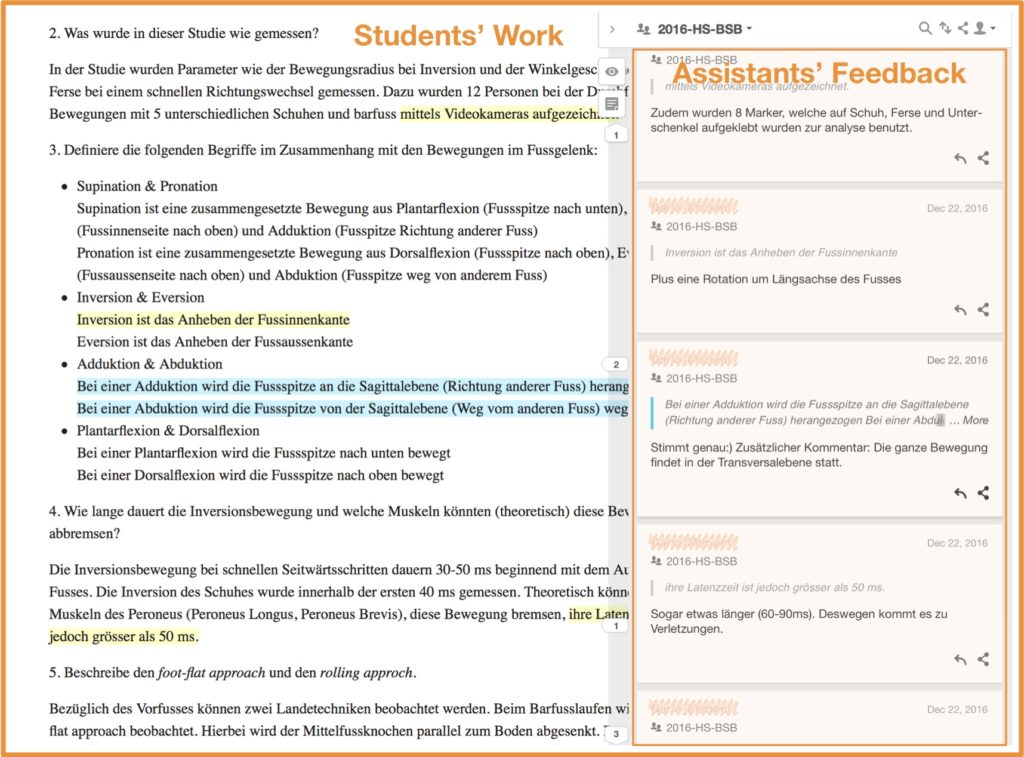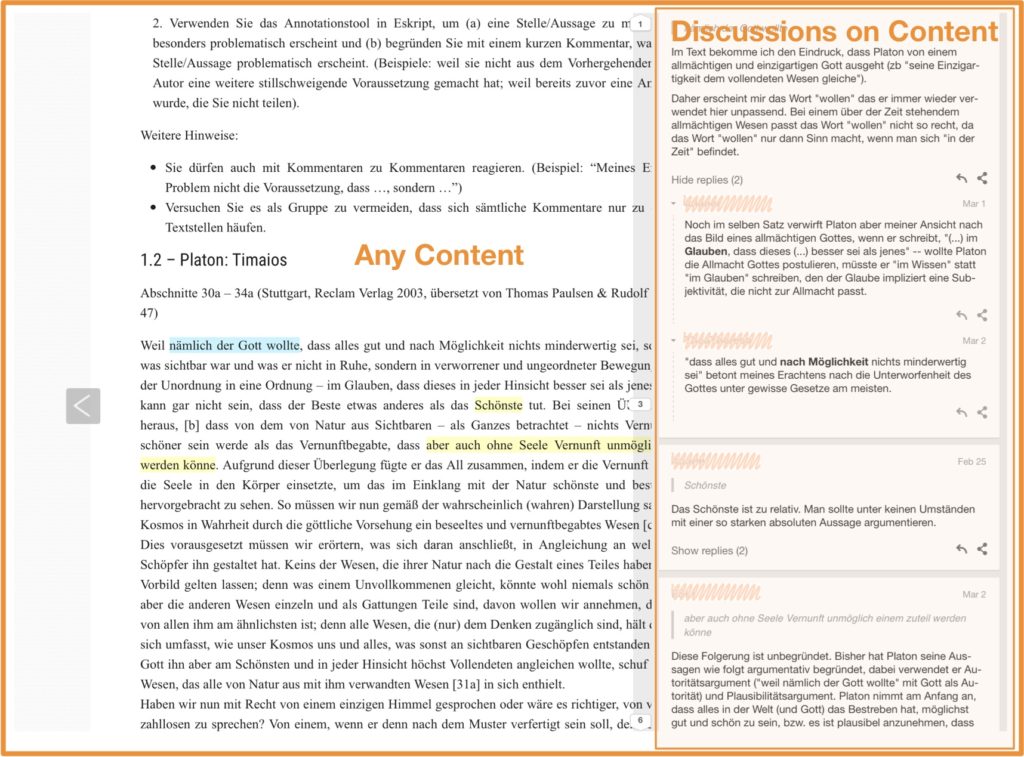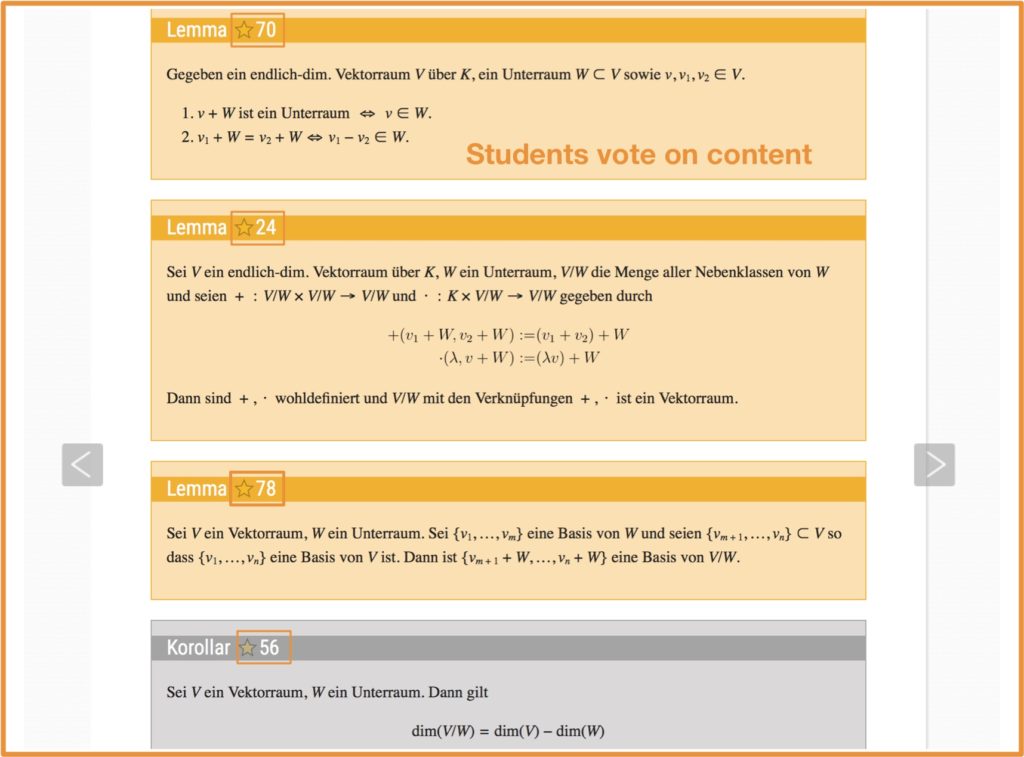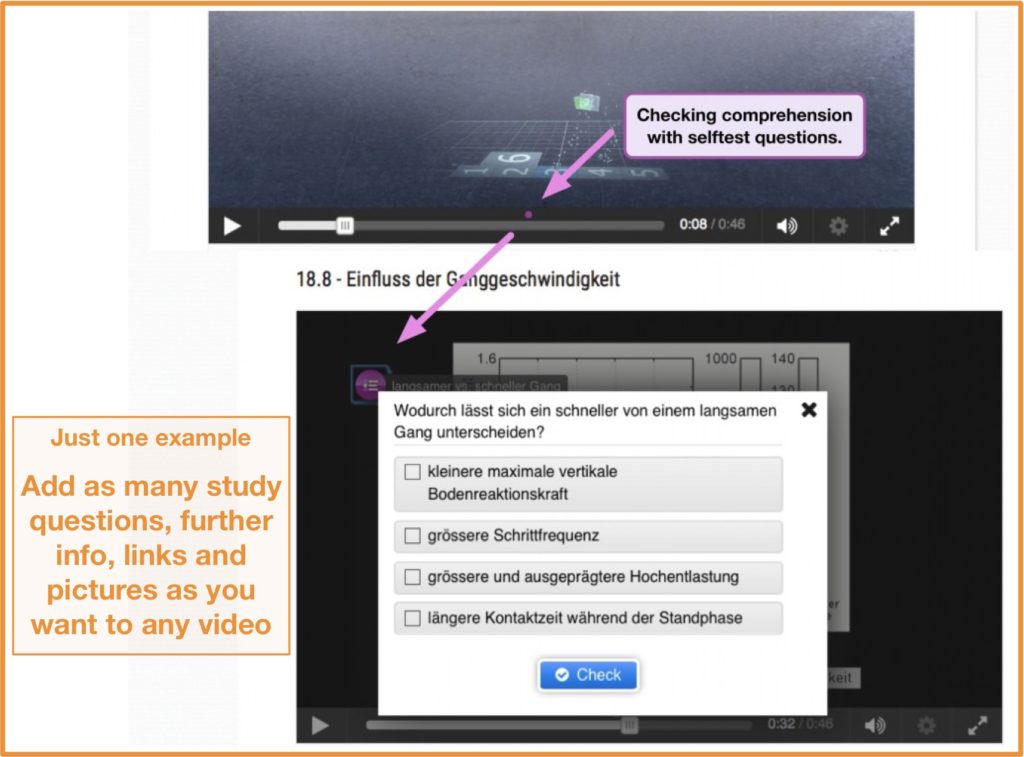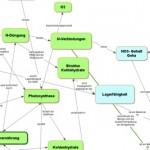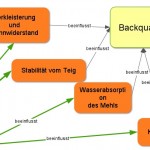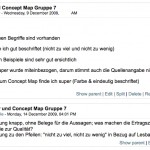eSkript, the platform for interactive lecture material at ETH Zurich was born in 2014 (cf. the interactive timeline about eSkript; new PolyBook link), and since then many scenarios have been used by many lecturers. (eSkript is available to all Switch AAI affiliated persons.)
The main goal of interactive lecture material is to engage students, which promises better learning outcomes. As a byproduct, it makes lecturers happier and have fun! 
1 – Review
Students are the best judges of your material. Make it available for annotation and let students correct it and give you feedback. Already after one round, your material will be perfect!
2 – Collaborative Study Material
Many students or many groups of students create material together. Students experience collaboration and see its benefits. They have access to other students’ work and because the material is presented as a whole, the result is something they can be proud of. Furthermore, peer review and annotation by peers or assistants is then possible.
3 – Feedback
When students publish work (text, papers, exercise solutions, etc.), assistants and lecturers can easily give feedback and start discussions on very good points students came up with or problems they seem to have, on the spot.
4 – Working with Texts (Papers, Journals, Articles,…)
Students can answer predefined questions (by lecturers/assistants/peers), ask questions about difficult passages, paraphrase, discuss interesting points, attach complementary material, prove points with links to other research, reflect and form opinions right where it is relevant. This kind of assignments foster critical thinking and collaboration. It is much easier and more appealing than using a forum, which is the alternative for such tasks.
5 – Voting
Easily get feedback (students can append a star to parts of content of your choosing) on good/important/… content. You can even go further and let students collaboratively decide through their voting on…[depending on your scenario].
6 – Interactivity Modules
By far my favorite application in eSkript are the interactive modules. The possibilities are endless. You can enhance your material with interactive videos, drag and drops, timelines, interactive images (juxtapositions, sliders, info hotspots, hidden hotspots, and sequences), and many more. A scenario that has worked repeatedly well is the design of interactive modules by students. Check out a few examples of interactive modules (new PolyBook link)!
These and more scenarios in more details with detailed tasks, profit, caveat and real life cases can be found in the eSkript Scenarios (new PolyBook link).
Have fun and find new ways to engage and interact with your students! Open your first eSkript (new PolyBook link) today.
https://eskript.ethz.ch/studentguide/chapter/open-your-own-eskript/
Note from May 2019: eSkript is not maintained anymore but PolyBooks are taking over! Contact LET for support.

